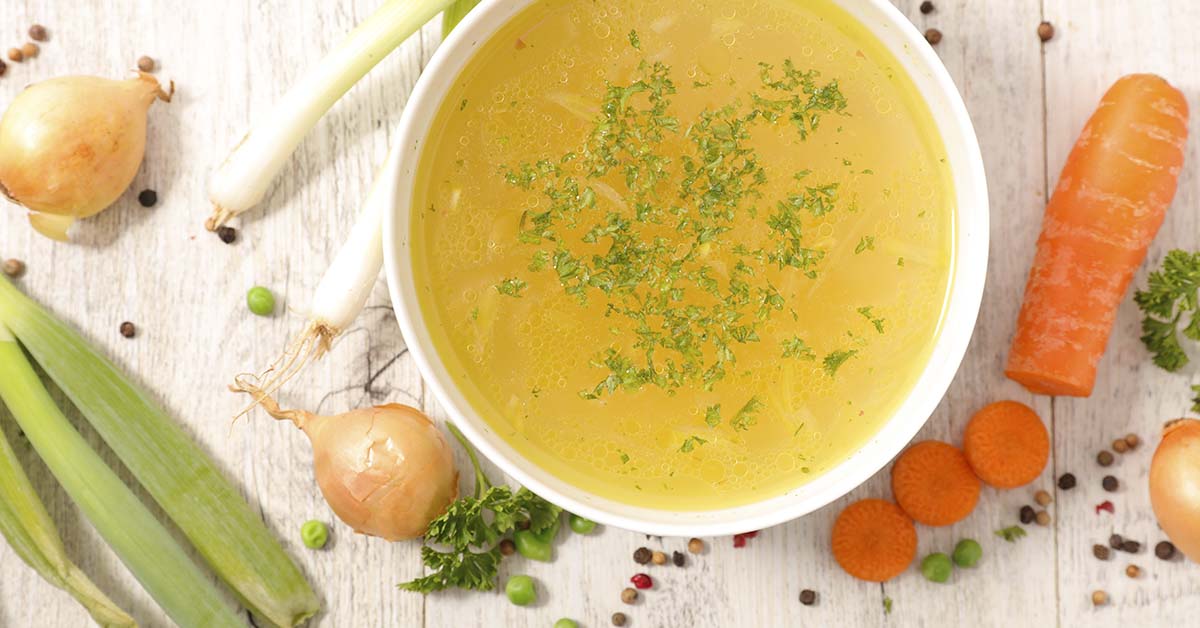Vegetable broth is the core ingredient for many types of soups, stews, even risottos. It’s typically in grocery stores in the form of cans or powder cubes. But if you like soups and other hot dishes as the cold weather rolls in, store-bought broth can become pricey. But you can make your own at home. Fresh vegetables and herbs are usually much more cost-effective and you have full control over the flavors. Plus, homemade broth only contains the chosen veggies, spices, and salt, with no additives or preservatives. Although it may sound daunting to make your own broth, it’s actually easy to whip up and store for whenever you need it. With this recipe, you can turn your broth into “bouillon ice cubes” or homemade vegetable broth powder.
Homemade Vegetable Broth Cubes or Powder
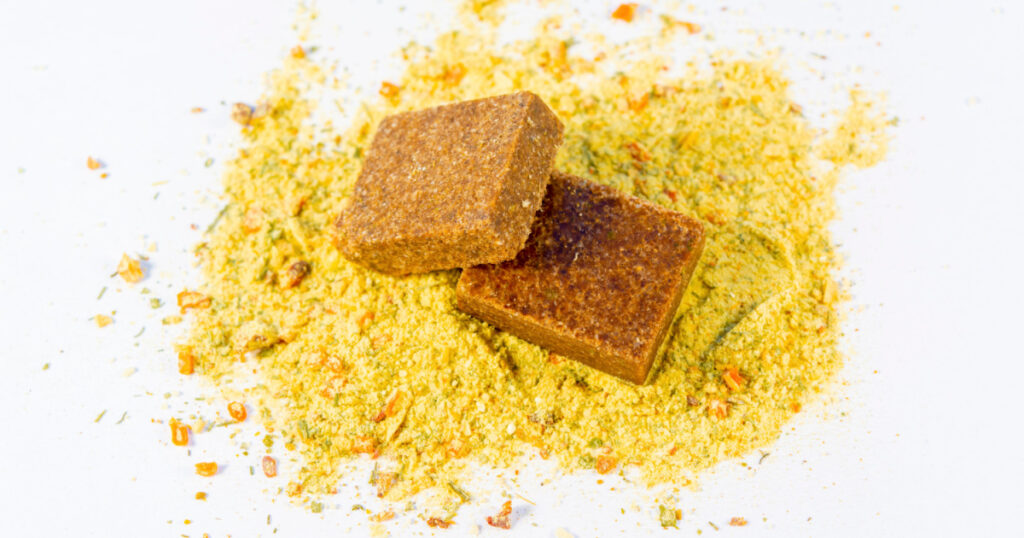
Ingredients
- 3.5 oz salt
- 2 tbsp olive oil
- About 3.3 lbs/1.5kg vegetables of your choice. Here’s one example:
- 2 zucchini
- 2 onions
- 4 garlic cloves
- 2 potatoes
- 3 carrots
- 3 celery sticks
- 1 oz parsley
- (Other options could include parsnips, leeks, cabbages, sun-dried tomatoes, red peppers, shallots, turmeric, basil, etc.) [1]
Prepare the broth:
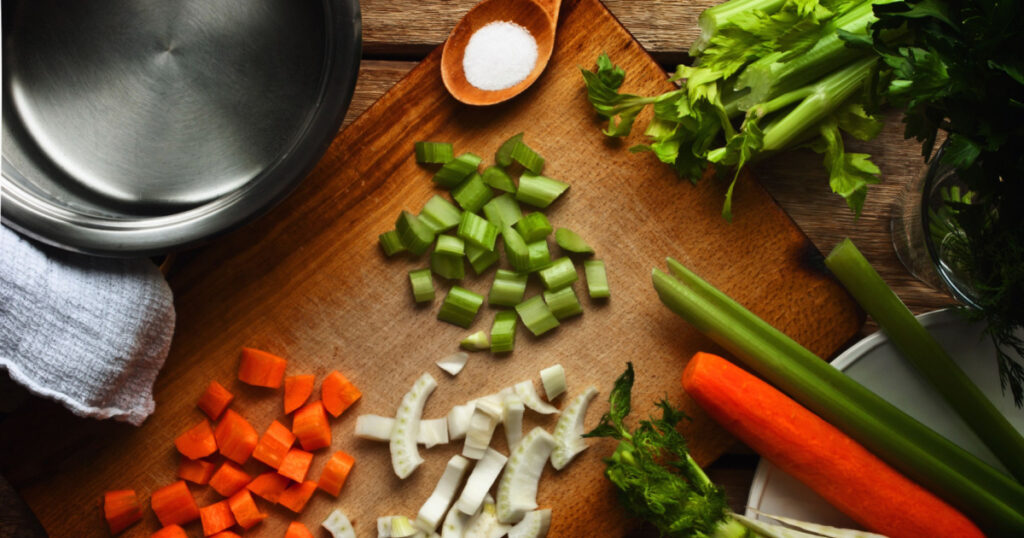
- Wash the vegetables well and dry them.
- Chop all of the vegetables into small cubes. (The smaller they are, the fast they’ll cook. They will also be easier to puree.) You could also use a food chopper or food processor to help with this step. If you are adding potatoes to your broth, place the chopped potatoes into a bowl of water to prevent them from discoloring.)
- Next, finely chop the garlic and parsley.
- In a large skillet, heat the oil over medium heat. Then add the onion pieces and lightly saute for a couple of minutes. Next, add the potatoes (if you are using) and cook for four to five minutes or until they begin to soften.
- Add the rest of the ingredients (except the parsley or other leafy herb you might be using). Cover the pan and let it simmer over medium-low heat for about 30 minutes or until the veggies are soft. Stir occasionally.
- Next, add the salt and stir again to make the veggies release their juices. Now simmer them uncovered for another 15–20 minutes. Stir occasionally.
- Use an immersion blender or a food processor to blend all the vegetables into a smooth puree.
- Now mix in the chopped parsley (or other herbs you may be using).
How to make homemade vegetable broth ice cubes:
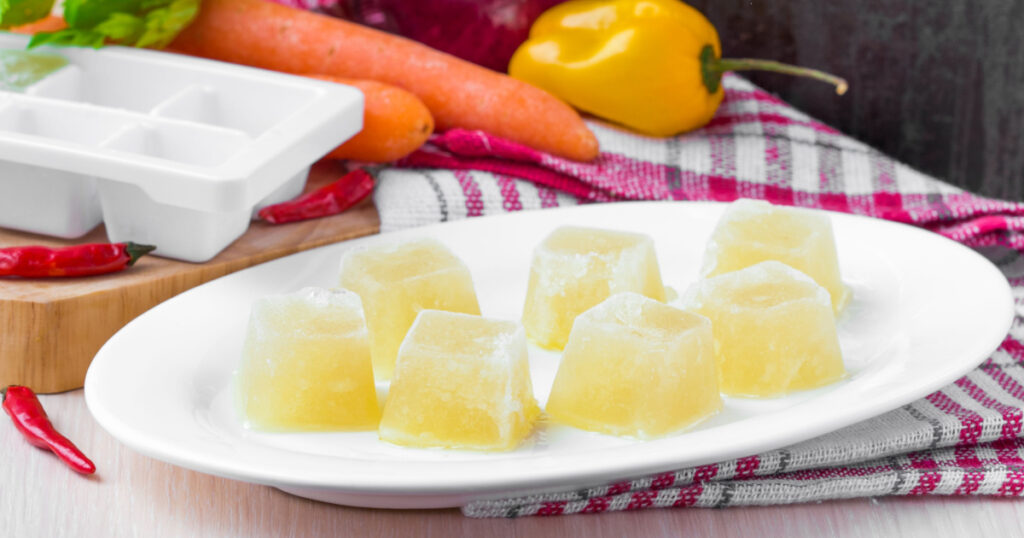
- Line a baking tray with parchment paper and pour the puree into it. Level out the mixture with a spoon or a spatula.
- Freeze the tray for a few hours or until the mixture has hardened. (The salt content will prevent it from becoming completely solid.) After that, use a sharp knife to slice the stock into cubes. Keep in mind, you might like having the option of smaller and larger cubes depending on the dish. You may also want to divide using a measuring spoon (such as a tablespoon) so it’s easier to follow future recipes.
- Store the cubes in a freezer-safe container, leaving space between each cube and pieces of parchment between each layer. Store for about six months.
- To use the cubes, add one cube per four cups of water. But you can change around the measurements depending on the type of soup and how flavorful you want it to be.
How to make homemade dehydrated vegetable broth powder:
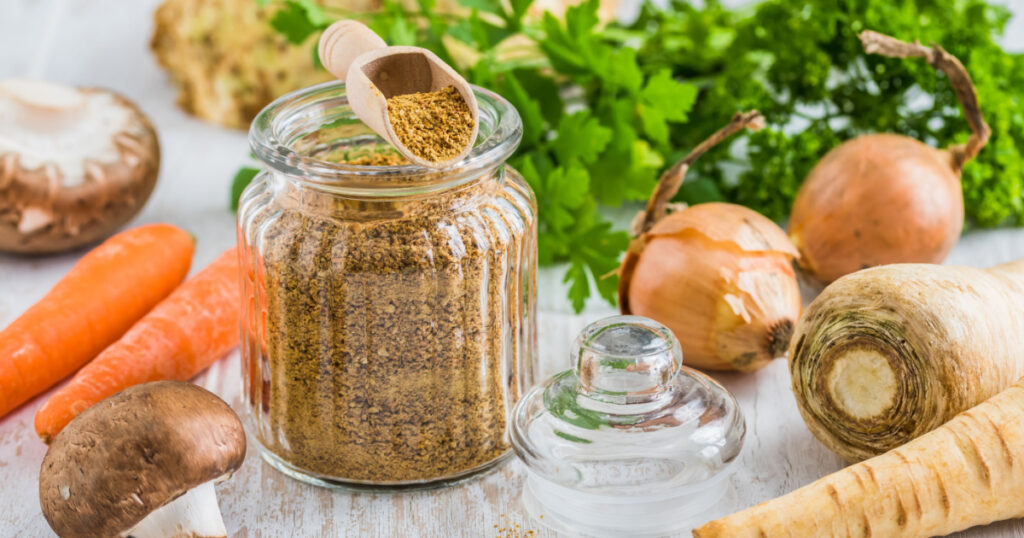
- Spread some vegetable puree onto a large tray covered with parchment paper and spread it in a thin layer. (You will have to complete this process in batches.) Place the tray into the oven or a dehydrator.
- For ovens: Set the temperature to 150ºF (65ºC). If your oven doesn’t go that low, choose its lowest setting then prop the door open a crack. Depending on the thickness of the puree and the temperature, this process can take up to 10 hours so keep an eye on it. But don’t crank up the heat in an attempt to speed the process. This can “bake” the puree, instead of properly drying it, and potentially burn it.
- For dehydrators: Set the temperature to 150ºF (65ºC) and let the tray dry for up to 10 hours. Start checking on the puree after five or six hours. Check the progress more and more frequently as time goes on.
- You’ll know the puree is ready when it’s dry enough to snap into pieces. Crush the flakes into homemade bouillon powder in a food processor or a coffee or spice grinder. Sieve the powder and grind any larger pieces left behind.
- Store the homemade vegetable broth powder in a dry jar for 6 months. Alternatively, you can store the jar in the fridge to keep the contents fresh for even longer.
- To use the powder, add about one teaspoon per one cup of water, but you can add more or less depending on the dish. You can can also sprinkle it over other foods like baked potatoes, pasta, curry, risotto, ramen, stews, and rice.
Notes:
- Change around the vegetables based on what’s in season and what flavors you personally prefer. And don’t be afraid to test different herbs and seasonings. Based on the dish or your mood, you can choose more neutral flavors or herbs and seasonings with more oomph.
- This recipe contains a lot of salt like bouillon has in general. But you can change the amount of salt depending on your taste. You can also skip it completely, but this may shorten the shelf life of this broth.
- In general, the cubes can stay in the freezer for 6 months, the powder’s shelf life is 6 months, and the fresh broth is good in the fridge for a week.
- This recipe yields about 60 vegetable broth ice cubes, about 0.7 oz (20 g) each, or about 8.5 oz (240 g) of powder, which is about 60 teaspoons of 0.14 oz (4 g) each.
Original recipe by Samira at Alphafoodie. See the full version for extra tips and tricks.
Keep Reading: This turmeric carrot soup is the BEST anti-inflammatory soup
Sources
- “Vegetable Bouillon.” The Harvest Kitchen. Deborah. October 20, 2015
- “Homemade Vegetable Bouillon Cubes and Powder.” Alpha Foodie. Samira. June 3, 2021
